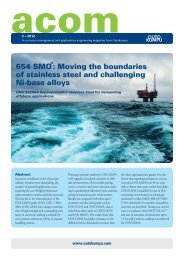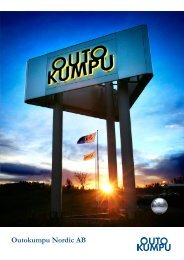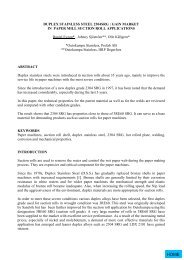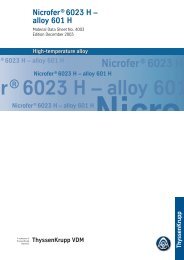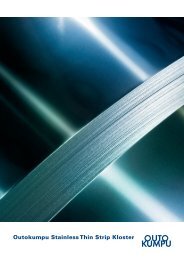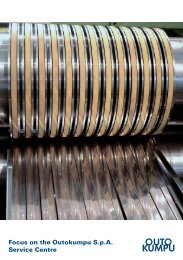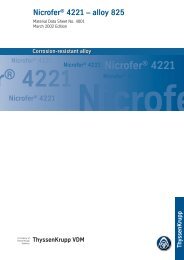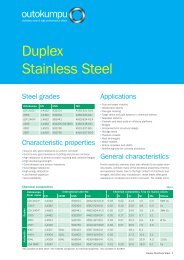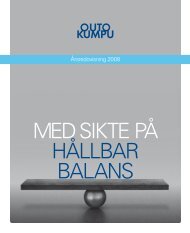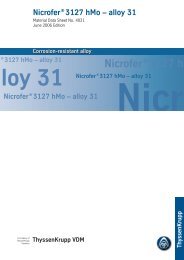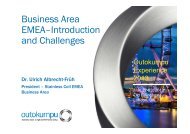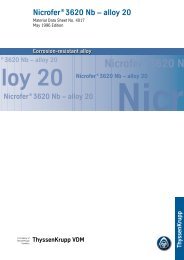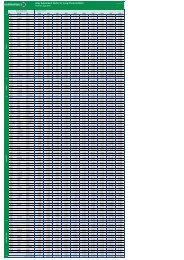Annual Report 2010 - Outokumpu
Annual Report 2010 - Outokumpu
Annual Report 2010 - Outokumpu
You also want an ePaper? Increase the reach of your titles
YUMPU automatically turns print PDFs into web optimized ePapers that Google loves.
37<br />
chromium ore was found to extend to a depth of 2–3 kilometres and possibly to four kilometres, while the chromitite layer<br />
possibly extends to a depth of 2–2.5 kilometres or more.<br />
Proven ore reserves at the Kemi Mine total approximately 37 million tonnes while the quantity of mineral resources totals<br />
some 87 million tonnes (estimated to a depth of one kilometre). Information in the new seismic research report indicates<br />
the existence of resources sufficient to allow several hundreds of years of mining activity even with doubled annual<br />
production volumes (the previous estimate was 70–80 years of mining activity). <strong>Outokumpu</strong>'s mineral resources were not<br />
updated on the basis of these findings.<br />
Investment to double ferrochrome production capacity<br />
In June <strong>2010</strong>, <strong>Outokumpu</strong> decided to restart the project to increase the Group's ferrochrome production capacity in<br />
Finland which had earlier been postponed. Including interest payments, this investment will total EUR 440 million. <strong>Annual</strong><br />
ferrochrome production at Tornio will be doubled to 530 000 tonnes, enabling <strong>Outokumpu</strong> to cover all of the Group's<br />
internal needs and also supply global markets with approximately 200 000 tonnes of ferrochrome on an annual basis.<br />
The expanded production capacity is expected to be operational during the first half of 2013 with capacity being ramped<br />
up in 2015. At current prices and exchange rates and at full capacity, the planned expansion will yield additional annual<br />
operating profits totalling some EUR 150 million.<br />
The ferrochrome market is very attractive because of high growth expectations and rising demand, especially from<br />
China. Demand for ferrochrome is primarily driven by the consumption of stainless steel. As ferrochrome production is a<br />
very energy-intensive process, the long-term price of ferrochrome is driven by problems with the availability of electrical<br />
power in South Africa, which supplies approximately 40% of the global market. Related constraints are expected to<br />
continue for several years, and electricity prices in South Africa are forecast to double over the next few years compared<br />
to prices in 2009.<br />
Kemi mine and Tornio ferrochrome smelter<br />
Production <strong>2010</strong> 2009 2008<br />
Ore excavated, million tonnes 1.3 0.5 1.3<br />
Chromite concentrates, 1 000 tonnes 598 247 614<br />
Ferrochrome 238 123 234<br />
Ore reserves and mineral resources<br />
31 Dec <strong>2010</strong> million tonnes grade<br />
Ore reserves<br />
Proven 36 26% Cr 2 O 3<br />
Mineral resources<br />
Indicated 13 30% Cr 2 O 3<br />
Inferred 74 29% Cr 2 O 3<br />
A mineral resource is a concentration or occurrence of material of intrinsic economic interest in or on the Earth's crust in<br />
such form, quality and quantity that there are reasonable prospects for eventual economic extraction. An ore reserve is<br />
the economically mineable part of the measured and/or indicated mineral resource. Ore reserves are not included in the<br />
mineral resources.<br />
<strong>Outokumpu</strong> <strong>Annual</strong> <strong>Report</strong> <strong>2010</strong> – Business – Tornio Works




